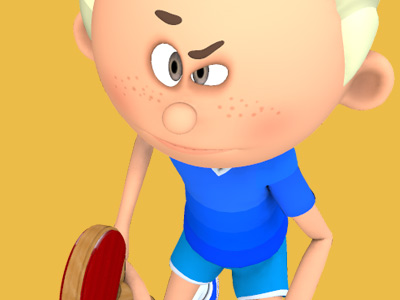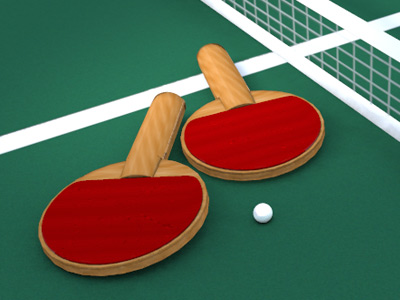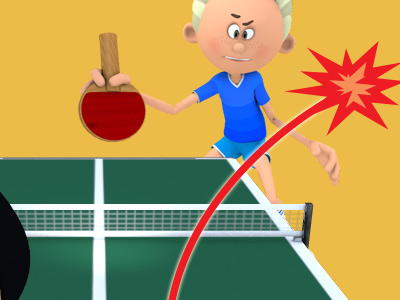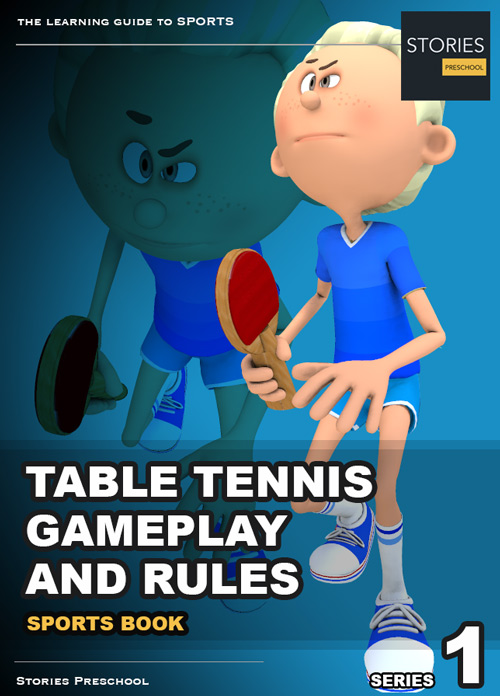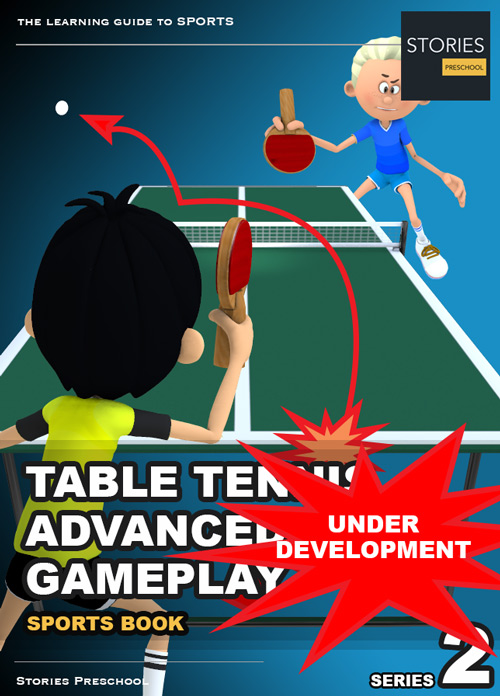Table Tennis
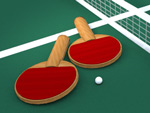
Types of Strokes
Table tennis strokes generally break down into offensive and defensive categories.
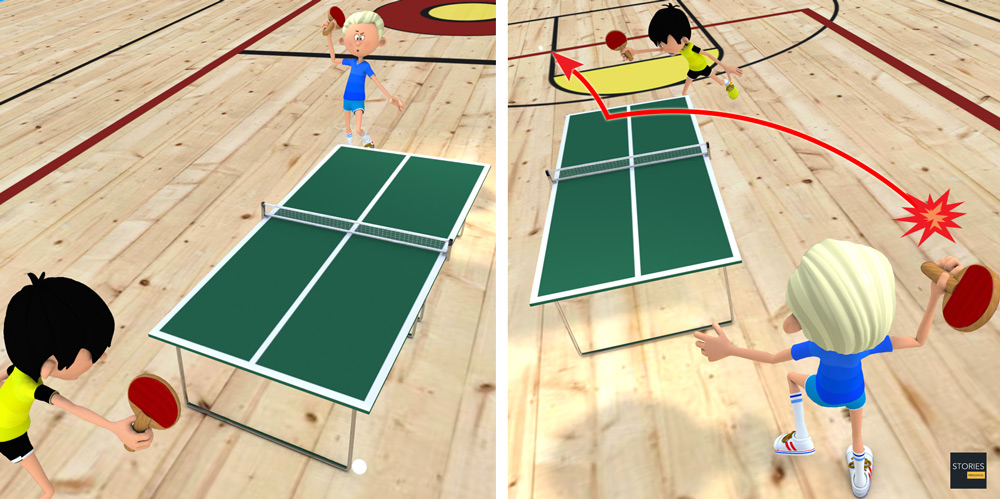
Offensive strokes
Hit
A direct hit on the ball propelling it forward back to the opponent. This stroke differs from speed drives in other racket sports like tennis because the racket is primarily perpendicular to the direction of the stroke and most of the energy applied to the ball results in speed rather than spin, creating a shot that does not arc much, but is fast enough that it can be difficult to return. A speed drive is used mostly for keeping the ball in play, applying pressure on the opponent, and potentially opening up an opportunity for a more powerful attack.
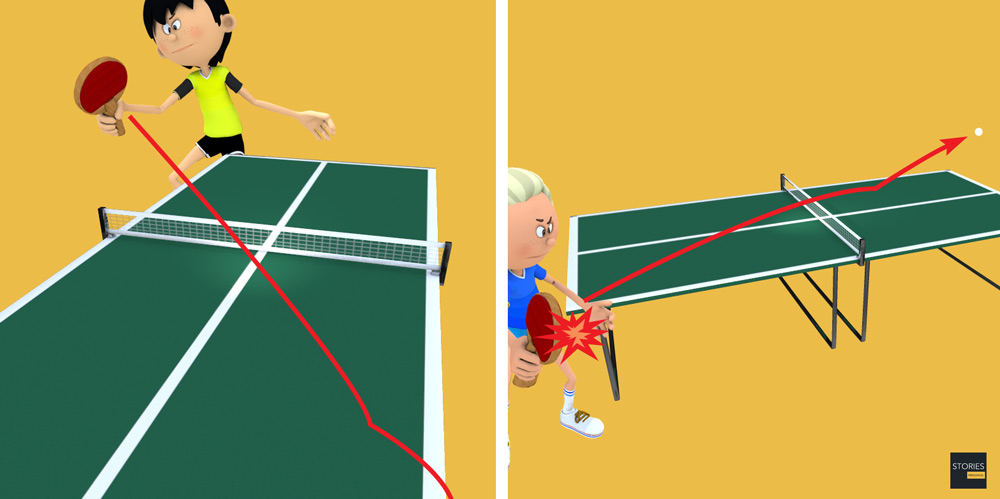
Loop
Perfected during the 1960s, the loop is essentially the reverse of the speed drive. The racket is much more parallel to the direction of the stroke ("closed") and the racket thus grazes the ball, resulting in a large amount of topspin. A good loop drive will arc quite a bit, and once striking the opponent's side of the table will jump forward, much like a kick serve in tennis.
Counter-hit
The counter-hit is usually a counterattack against drives, normally high loop drives. The racket is held closed and near to the ball, which is hit with a short movement "off the bounce" (immediately after hitting the table) so that the ball travels faster to the other side. A well-timed, accurate counter-drive can be as effective as a smash.
Flip
When a player tries to attack a ball that has not bounced beyond the edge of the table, the player does not have the room to wind up in a backswing. The ball may still be attacked, however, and the resulting shot is called a flip because the backswing is compressed into a quick wrist action. A flip is not a single stroke and can resemble either a loop drive or a loop in its characteristics. What identifies the stroke is that the backswing is compressed into a short wrist flick.
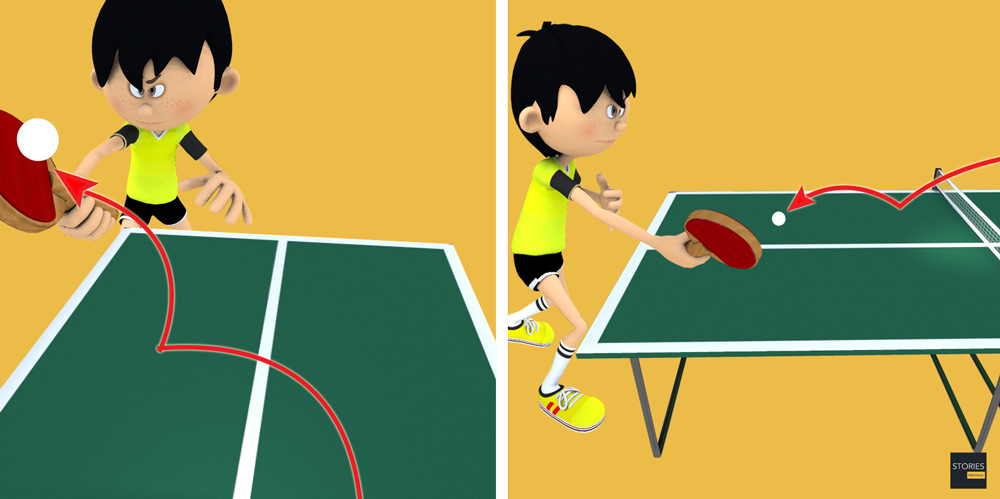
Smash
The offensive trump card is the smash. A player will typically execute a smash when his or her opponent has returned a ball that bounces too high or too close to the net. Smashing consists of using a large backswing and rapid acceleration to impart as much speed on the ball as possible. The goal of a smash is to get the ball to move so quickly that the opponent simply cannot return it. Because the ball speed is the main aim of this shot, often the spin on the ball is something other than topspin. Sidespin can be used effectively with a smash to alter the ball's trajectory significantly, although most intermediate players will smash the ball with little or no spin. An offensive table tennis player will think of a rally as a build-up to a winning smash.
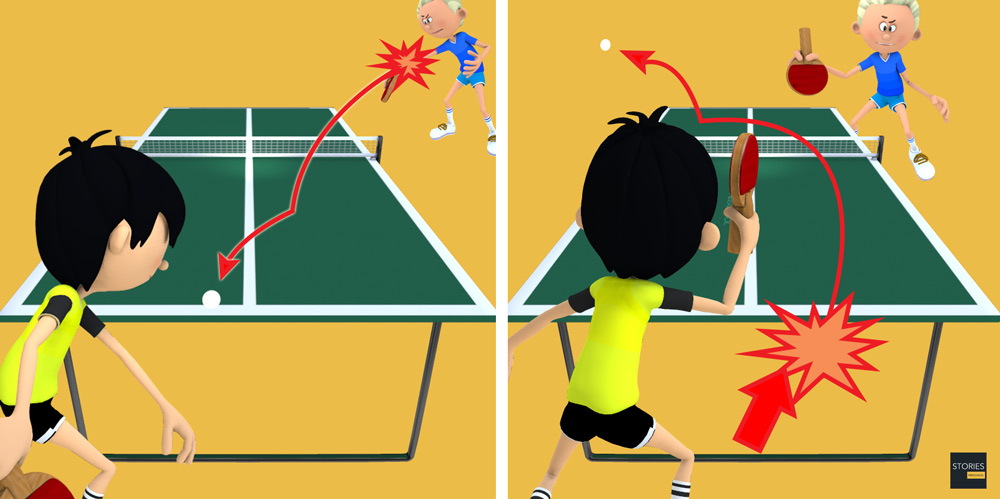
Defensive strokes
Push
The push (or "slice" in Asia) is usually used for keeping the point alive and creating offensive opportunities. A push resembles a tennis slice: the racket cuts underneath the ball, imparting backspin and causing the ball to float slowly to the other side of the table. While not obvious, a push can be difficult to attack because the backspin on the ball causes it to drop toward the table upon striking the opponent's racket. In order to attack a push, a player must usually loop the ball back over the net. Often, the best option for beginners is to simply push the ball back again, resulting in pushing rallies. Against good players, it may be the worst option because the opponent will counter with a loop, putting the first player in a defensive position. Another response to pushing is flipping the ball when it is close to the net. Pushing can have advantages in some circumstances, such as when the opponent makes easy mistakes.
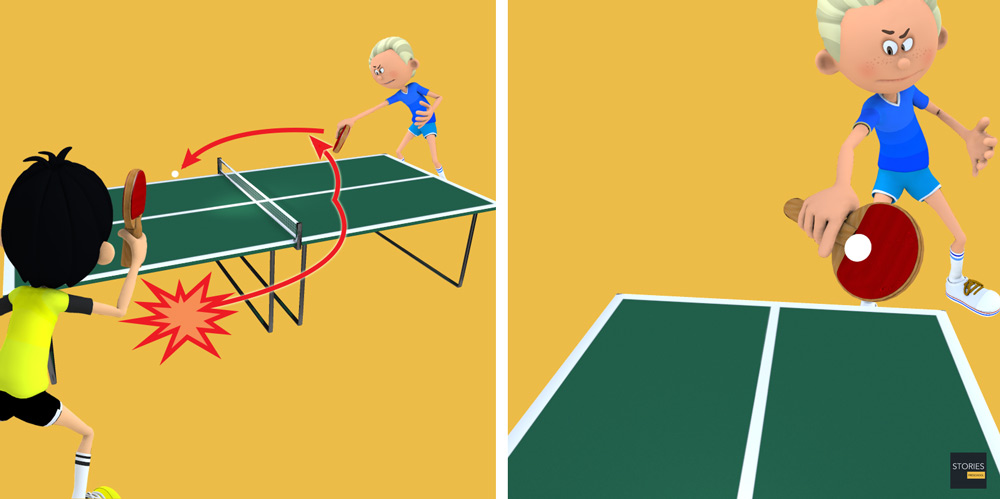
Chop
A chop is the defensive, backspin counterpart to the offensive loop drive. A chop is essentially a bigger, heavier push, taken well back from the table. The racket face points primarily horizontally, perhaps a little bit upward, and the direction of the stroke is straight down. The object of a defensive chop is to match the topspin of the opponent's shot with backspin. A good chop will float nearly horizontally back to the table, in some cases having so much backspin that the ball actually rises. Such a chop can be extremely difficult to return due to its enormous amount of backspin. Some defensive players can also impart no-spin or sidespin variations of the chop.
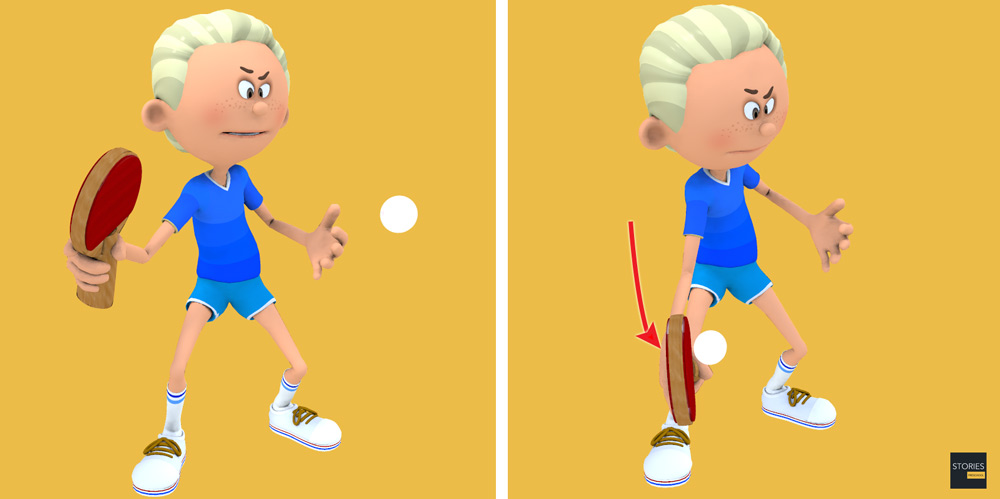
Block
The block is a simple shot, but nonetheless can be devastating against an attacking opponent. A block is executed by simply placing the racket in front of the ball right after the ball bounces; thus, the ball rebounds back toward the opponent with nearly as much energy as it came in with. This is not as easy as it sounds, because the ball's spin, speed, and location all influence the correct angle of a block. It is very possible for an opponent to execute a perfect loop, drive, or smash, only to have the blocked shot come back at him just as fast. Due to the power involved in offensive strokes, often an opponent simply cannot recover quickly enough, and will be unable to return the blocked shot. Blocks almost always produce the same spin as was received, many times topspin. Depending on the spin of the ball, the block may be returned to an unexpected side of the table. This may come to your advantage, as the opponent may not expect this.
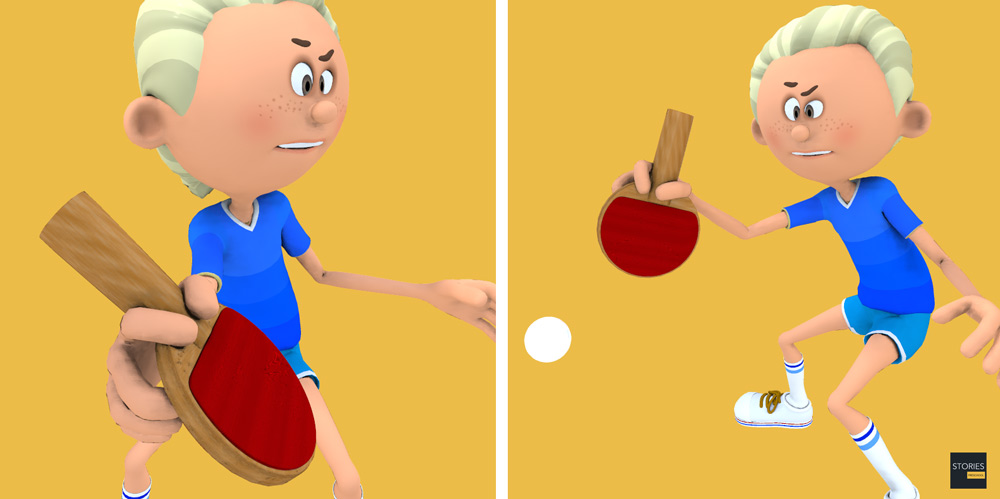
Lob
The defensive lob is possibly the most impressive shot, since it propels the ball about five metres in height, only to land on the opponent's side of the table with great amounts of spin. To execute, a defensive player first backs-off the table 4–6 meters; then, the stroke itself consists of lifting the ball to an enormous height before it falls back to the opponent's side of the table. A lob is inherently a creative shot, and can have nearly any kind of spin. Top-quality players use this to their advantage in order to control the spin of the ball. For instance, though the opponent may smash the ball hard and fast, a good defensive lob could be more difficult to return due to the unpredictability and heavy amounts of the spin on the ball. Thus, though backed off the table by tens of feet and running to reach the ball, a good defensive player can still win the point using good lobs. However, at the professional level, lobbers will lose the point most of the time, so the lob is not used unless it is really necessary.
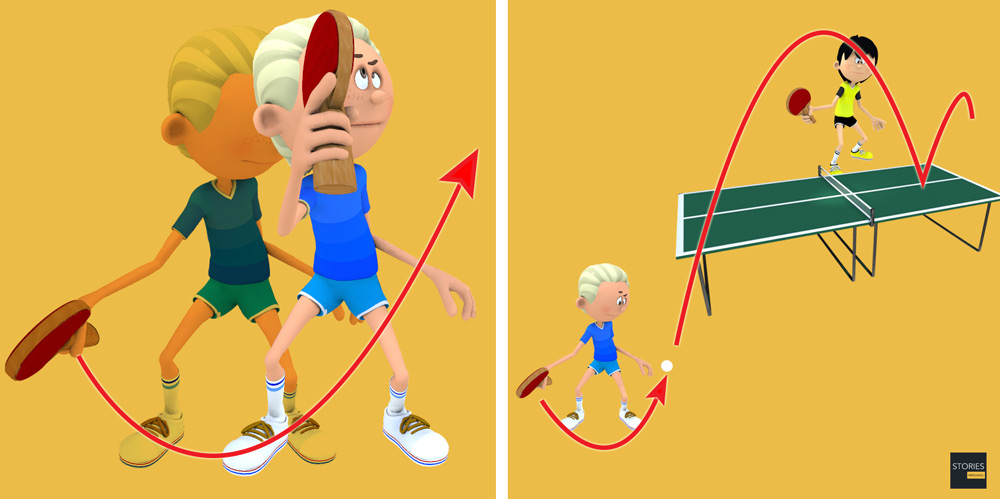
SPORTS
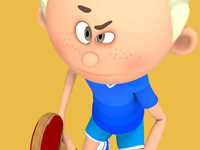
RESOURCES
This article uses material from the Wikipedia article "Table Tennis", which is released under the Creative Commons Attribution-Share-Alike License 3.0.
© Stories Preschool. All Rights Reserved.
